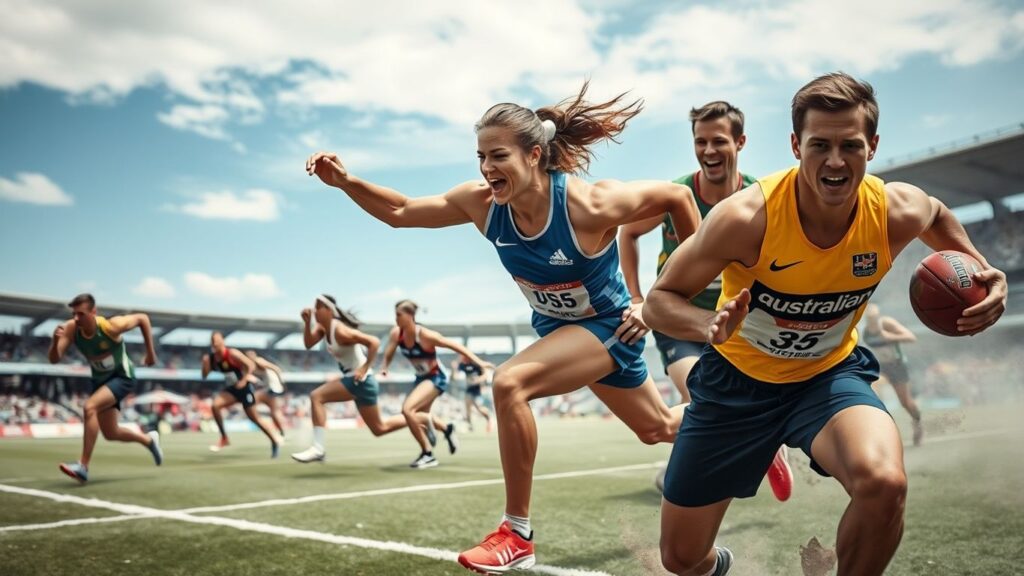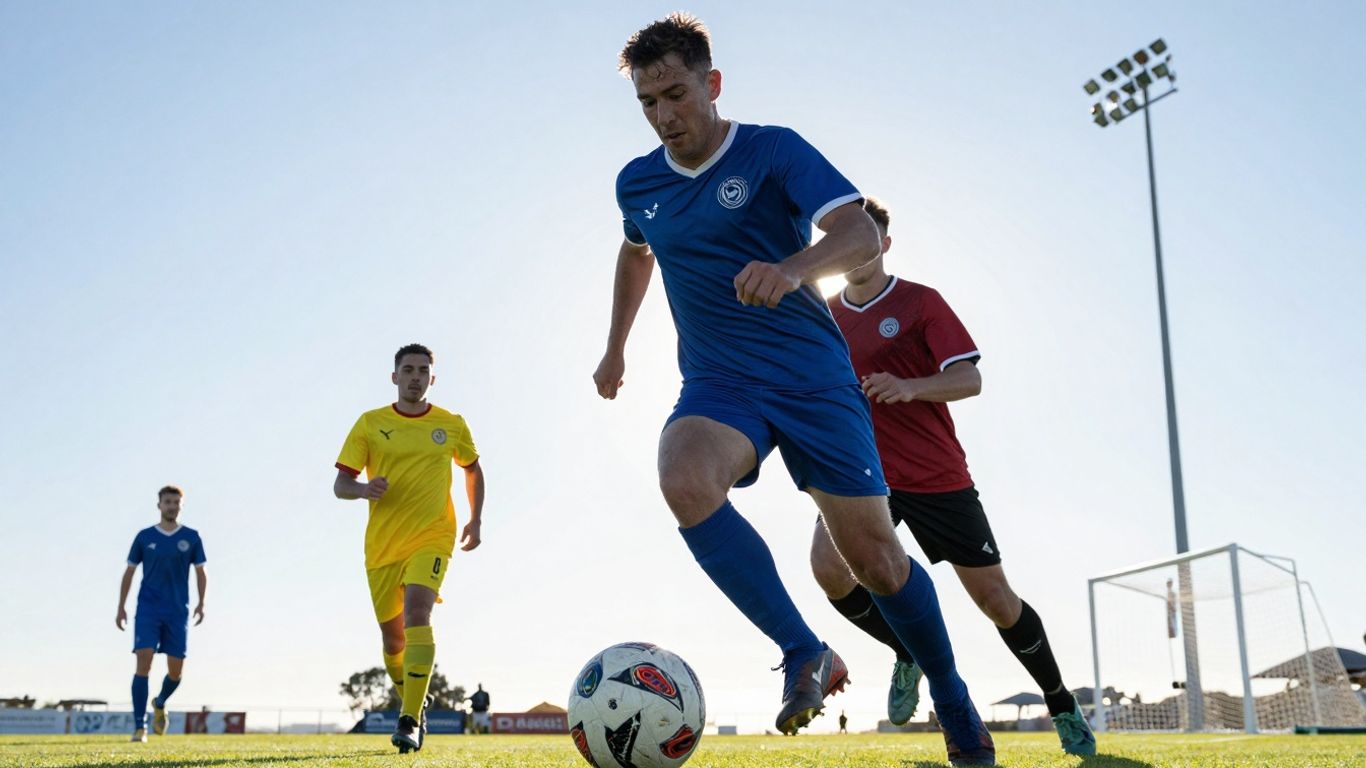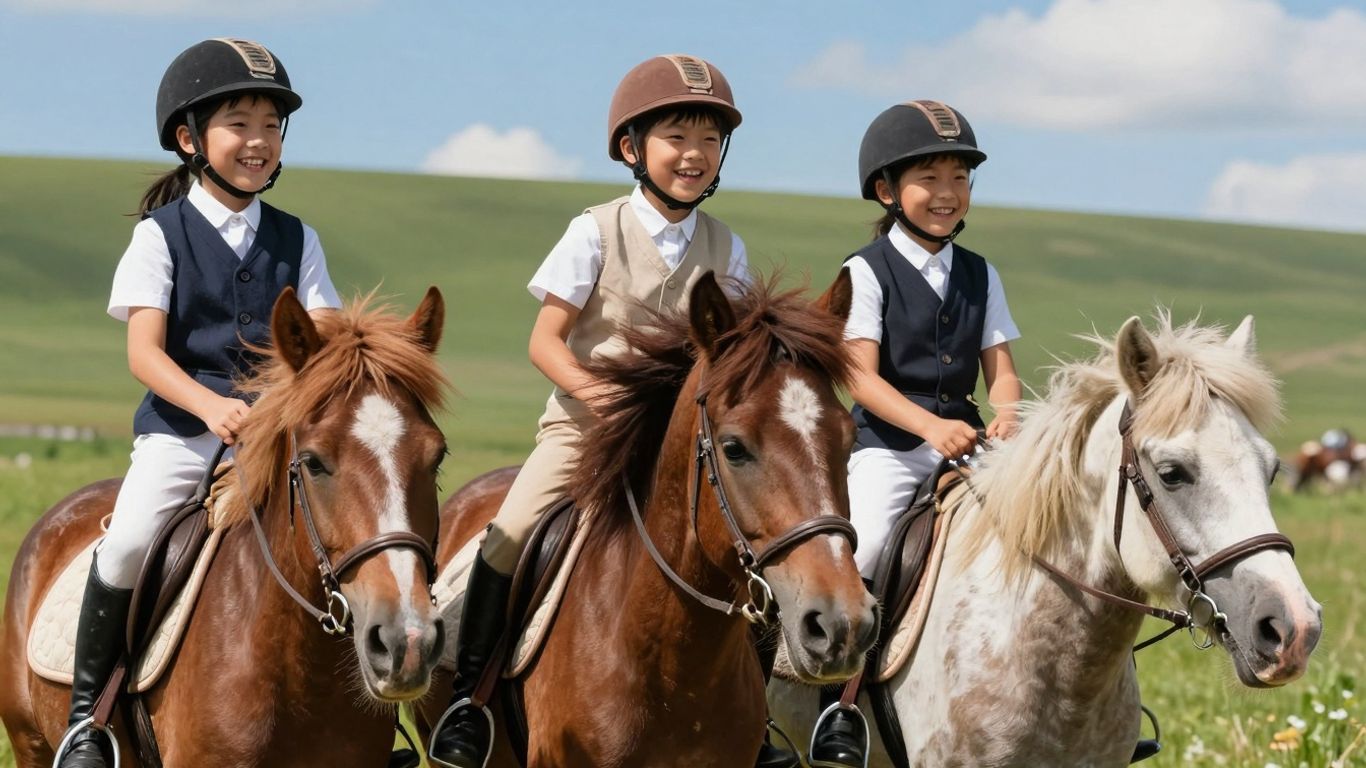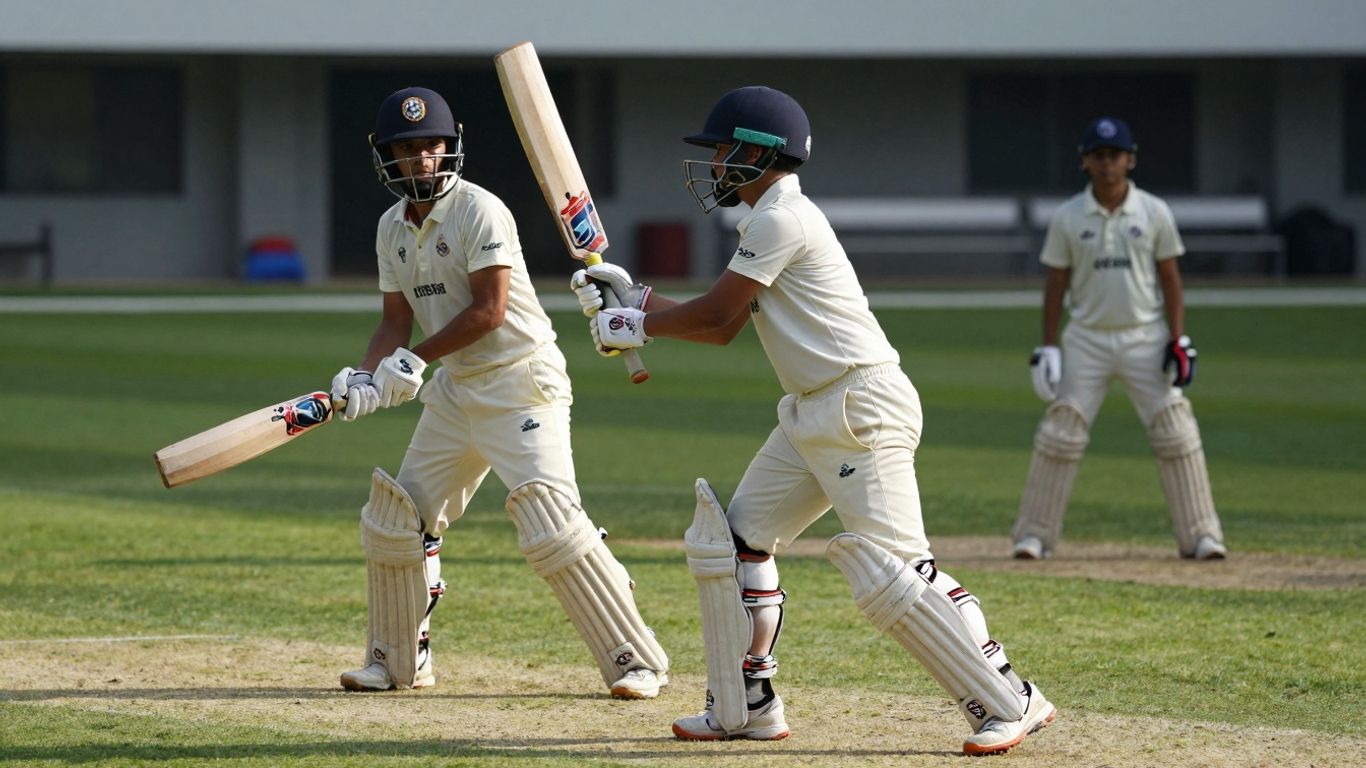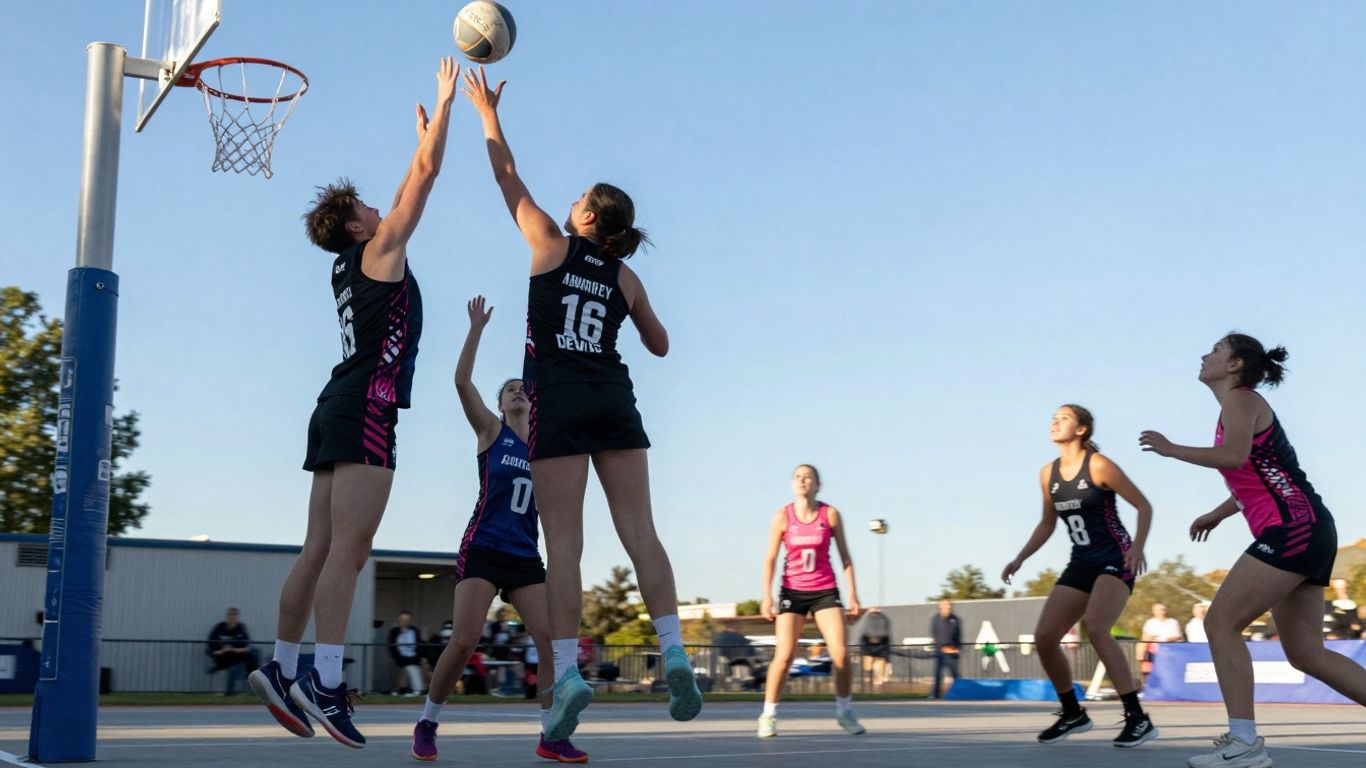Hey everyone! So, we’re diving into something pretty important for anyone serious about sports in Australia: keeping athletes safe and sound. It’s not just about winning medals, right? It’s about making sure our athletes are looked after, both on and off the field. We’ll be chatting about how to prevent injuries, especially for our female athletes who face some unique challenges, and what it takes to create a supportive environment where everyone can thrive. Plus, we’ll touch on building trust and what happens when athletes move on from the high-performance scene. Let’s get into it!
Key Takeaways
- Putting athlete wellbeing first is key to success in Australian sports, covering mental, physical, and emotional health for better performance and life outside of sport.
- Injury prevention is a big deal, especially for female athletes who have higher risks, and it really works when athletes stick to the plans.
- High-performance environments need individualised plans for athletes and good use of available resources to support their wellbeing.
- Building trust and keeping things confidential are super important for relationships between athletes and wellbeing providers, with clear boundaries always in place.
- Supporting athletes during big changes, like moving into or out of high-performance programs, needs special attention because these times can be tough.
Prioritising Athlete Wellbeing and Engagement

Looking after yourself isn’t just about the physical grind; it’s a massive part of performing at your best. Athlete Wellbeing and Engagement, or AW&E, is all about making sure you’re supported mentally, emotionally, and physically. It’s not just a nice-to-have; it’s pretty much essential for staying at the top of your game and, honestly, for life after sport too.
Understanding Athlete Wellbeing and Engagement Principles
At its core, AW&E is about creating an environment where athletes can thrive, not just as competitors, but as people. This means having a solid understanding of what makes each athlete tick, what their individual needs are, and how to support them through the ups and downs of a high-performance career. It’s about balance – finding that sweet spot between the demands of elite sport and having a life outside of it. This holistic approach helps athletes build resilience and maintain their passion for their sport long-term.
The Role of Wellbeing and Engagement Providers
These providers are your go-to people for support. They’re there to help you navigate the pressures of high-performance sport, connect you with resources, and encourage personal development. Think of them as guides who help you balance training and competition with other life interests. They’re trained to understand the unique challenges you face and can offer tailored support, whether it’s mental health services, career advice, or just someone to talk to. They also play a big part in helping you plan for life after sport.
Fostering Sustained Excellence Through Holistic Support
Sustained excellence isn’t just about winning; it’s about being able to perform consistently over time without burning out. Holistic support means looking at the whole picture. This includes:
- Individualised Plans: Creating plans that consider your training, competition schedule, and personal aspirations.
- Resource Utilisation: Making sure you know about and can access all the support services available, from mental health professionals to career counsellors.
- Professional Development: Encouraging providers to keep learning and improving their skills to offer the best support possible.
It’s easy to get caught up in the intensity of elite sport, sometimes forgetting that you’re a person first. AW&E providers help bridge that gap, making sure your wellbeing is always a priority, which ultimately feeds back into your performance.
Here’s a look at some recommended provider-to-athlete ratios, though these can vary:
| Organisation | Provider to Athlete Ratio |
|---|---|
| English Institute of Sport | 1:40–50 |
| New Zealand Rugby | 1:40 |
| Rugby Players Ireland | 1:80 (Current) / 1:40 (Goal) |
| Australian Football League | 1–2: 45–50 |
| National Rugby League (Career Coach) | 1:90 |
| National Rugby League (Wellbeing Manager) | 1:90 |
| RUPA (Rugby Union Players Association) | 1:40 |
| Cricket Australia (Male) | 1:30 (full-time PDM) |
| Cricket Australia (Female) | 1:19 (0.8 PDM) |
| PFA Player Development | 1:60 (full-time PDM) |
The AIS suggests a best practice ratio of 1:40 for AW&E providers.
Injury Prevention Strategies for Australian Athletes
Addressing Higher Injury Risks in Female Athletes
It’s a bit of a tough reality, but female athletes, especially in sports like Australian Rules Football, often face a higher risk of certain injuries, like knee injuries, compared to their male counterparts. This isn’t about blaming anyone; it’s just a fact we need to deal with. The good news is, we’re getting better at figuring out how to reduce these risks. Implementing well-designed injury prevention programs can make a real difference.
Implementing Effective Injury Prevention Practices
So, what actually works? Injury prevention isn’t just one thing; it’s a mix of different strategies. Think of it like building a house – you need a solid foundation and lots of different parts working together.
- Exercise Programs: These are key. Specific exercises, often focusing on strength, balance, and controlled movements, can significantly lower the chances of getting hurt. We’re talking about things that build resilience in the body.
- Load Management: This is about making sure athletes aren’t doing too much, too soon. It involves carefully planning training and game schedules to avoid overloading the body, which can lead to injuries.
- Screening and Assessment: Regularly checking athletes for any imbalances or weaknesses can help identify potential problems before they become serious injuries.
- Protective Equipment: While not a magic bullet, the right gear can offer a layer of defence against certain types of impacts.
The Importance of Athlete Adherence to Prevention Programs
Having all these great strategies in place is one thing, but they only work if athletes actually do them. It sounds obvious, right? But getting athletes to stick with prevention programs can be tricky. Sometimes it’s about time, sometimes it’s about understanding why they’re doing it, and sometimes it’s just about making it part of the routine.
When athletes understand the ‘why’ behind the exercises and feel supported by their coaches and support staff, they’re much more likely to commit. It’s a team effort, really. If the club culture values injury prevention, athletes will too.
Here’s a quick look at what can help get athletes on board:
- Education: Clearly explaining the benefits and the science behind the programs. Knowing why they’re doing it makes a big difference.
- Integration: Making sure these programs fit into the regular training schedule, rather than feeling like an extra chore.
- Feedback: Providing athletes with feedback on their progress and how the program is helping them. Seeing improvements is a great motivator.
- Athlete Voice: Involving athletes in the planning and discussion around prevention programs can give them a sense of ownership.
Navigating High-Performance Environments

High-performance sport is a whole different ballgame, isn’t it? It’s intense, demanding, and can really push athletes to their limits. Making sure they’re supported properly in this environment is key, not just for their performance, but for their overall wellbeing too. It’s about creating a system where athletes feel seen, heard, and looked after, even when the pressure is on.
Athlete Individualised Plans for Wellbeing
Think of an Individualised Plan as a roadmap for each athlete. It’s not a one-size-fits-all deal. These plans look at what makes each athlete tick – their strengths, their challenges, their goals, both in and out of sport. It’s about getting them to think about life beyond the podium, too. We want them to balance the demands of high performance with having a life outside of it, whether that’s education, career development, or just personal stuff. It’s about helping them spot what they need to do to do well in sport and in life, and then checking in to see how they’re tracking.
- Identify behaviours needed to thrive in high-performance sport and life.
- Monitor and evaluate progress in sport and personal life.
- Balance the competing demands of high-performance sport with life outside of it.
Case Management and Resource Utilisation
Sometimes, athletes need a bit more specialised help, and that’s where case management comes in. It’s about spotting when an athlete’s needs go beyond what a wellbeing provider can offer and making sure they get connected to the right people – whether that’s a psychologist, a nutritionist, or someone else. It’s also about making sure everyone involved, like coaches and medical staff, knows who’s doing what, so the athlete gets consistent support. Having a clear picture of who’s providing what support is important, especially if an athlete has multiple people looking after them.
It’s vital to have clear lines of communication and a shared understanding of roles within the athlete support network. This prevents athletes from falling through the cracks and ensures their needs are met efficiently and effectively.
Professional Development for Wellbeing Providers
For the people actually doing the supporting, ongoing learning is a must. High-performance sport is always changing, and so are the needs of athletes. Wellbeing providers need to keep their skills sharp, stay up-to-date with the latest research, and understand the unique pressures of the Australian high-performance system. This means having the right qualifications, sure, but also being adaptable, empathetic, and genuinely passionate about helping athletes grow, not just as competitors, but as people. It’s about building trust and knowing when to refer athletes to other specialists when their needs are outside your area of expertise.
Building Trust and Confidentiality
Establishing Trust-Based Athlete Relationships
Look, building a solid connection with athletes is pretty much the bedrock of everything we do in high-performance sport, especially when it comes to their wellbeing. It’s not just about being friendly; it’s about creating a space where they feel safe to open up about whatever’s going on, good or bad. This means being upfront from the get-go about what you can and can’t do, and what information stays between you. Think of it like this: you wouldn’t tell your mate all your deepest secrets if you didn’t trust them, right? It’s the same for athletes. They need to know that when they share something personal, it’s going to be handled with care and respect.
- Be upfront about your role and limitations: Clearly explain what you do and what you don’t do. No surprises down the track.
- Listen more than you talk: Really hear what they’re saying, not just the words, but the feelings behind them.
- Show genuine interest: Ask about their lives outside of sport, not just their performance metrics.
- Be consistent: Your actions should always match your words. Reliability builds trust.
Athletes are individuals with unique experiences and backgrounds. Acknowledging and respecting these differences is key to building rapport. It’s about seeing the person, not just the athlete, and understanding how their world outside of sport impacts their performance and wellbeing.
Confidentiality and Information Disclosure Protocols
This is a big one. Confidentiality isn’t just a nice-to-have; it’s a must-have. Athletes need to be absolutely certain that what they tell you stays with you, unless there’s a really serious reason to share it. We’re talking about situations where someone’s safety is at risk – theirs or someone else’s – or if the law requires it. Otherwise, that information is theirs to control. It’s about respecting their privacy and giving them agency over their own stories.
Here’s a quick rundown of how it generally works:
- Athlete Consent is King: You need their explicit ‘yes’ before sharing anything with anyone else, including coaches or other support staff.
- When to Break Silence (Carefully): If you genuinely believe there’s a serious risk of harm, you might need to speak up. This isn’t a decision to take lightly, and you’d usually follow specific organisational guidelines.
- Legal Obligations: Sometimes, you might be legally required to disclose information. Again, this is rare and usually involves specific legal processes.
Maintaining Professional Boundaries with Athletes
Keeping things professional is just as important as confidentiality. It means not blurring the lines between being a support provider and being a friend. This can be tricky, especially when you spend a lot of time together and genuinely care about the athletes. But it’s vital for maintaining objectivity and ensuring the athlete always feels they’re receiving support based on their needs, not on a personal relationship.
Think about it like this:
- Avoid dual relationships: Don’t get involved in social situations outside of your professional capacity.
- Keep communication focused: Stick to topics relevant to their wellbeing and performance.
- Be mindful of personal disclosures: While some openness can build rapport, avoid oversharing your own personal issues.
- Refer when necessary: If a situation feels like it’s crossing a line or requires a different kind of support, don’t hesitate to refer them to someone else.
Supporting Athletes Through Transition Periods
Sporting careers, especially at the high-performance level, aren’t always a straight line. They’re full of ups and downs, and sometimes, big shifts. These changes, whether it’s moving into a new program, dealing with an injury, or even thinking about life after sport, can be a bit of a bumpy ride for athletes. It’s a time when they might feel more vulnerable, and that’s where good support makes a real difference.
Recognising Heightened Wellbeing Risks During Transitions
Transitions are a big deal. Think about an athlete getting selected for a national team – exciting, right? But it also means moving away from home, a new training environment, and a whole lot of pressure. Or what about an athlete who’s been in the system for years and suddenly isn’t selected anymore? That’s a massive shock and can really impact how they feel about themselves. Even things like major competitions or significant injuries can throw an athlete off balance. These moments are when wellbeing support needs to be extra present and tailored.
- Injury: A serious injury can mean a long road to recovery, impacting not just physical health but also mental state and future prospects.
- Non-selection: Being overlooked for a team or event can lead to feelings of inadequacy and disappointment.
- Program changes: Moving between teams, age groups, or even different training philosophies can be disorienting.
- Life events: Personal issues outside of sport can also coincide with sporting transitions, adding extra stress.
It’s important to remember that athletes are people first. Their lives outside of sport don’t stop just because they’re in a high-performance environment. When these two worlds collide during a transition, the impact can be significant.
Proactive and Customised Wellbeing Servicing
Because these transition periods are so sensitive, a one-size-fits-all approach just won’t cut it. Wellbeing providers need to be on the front foot, anticipating potential challenges and offering support that’s specific to each athlete’s situation. This might involve:
- Early intervention: Checking in regularly, especially when a transition is on the horizon.
- Individualised plans: Developing strategies with the athlete to manage the specific pressures they might face.
- Resource connection: Making sure athletes know who to talk to and where to get help, whether it’s for mental health, career advice, or financial planning.
Transition-Out Support for Departing Athletes
Leaving a high-performance program, whether it’s due to retirement, injury, or simply moving on, is a massive life change. Athletes often dedicate years to their sport, and suddenly that structure and identity are gone. It’s vital to have a plan in place for this. This support should ideally start well before the athlete actually leaves, helping them to:
- Explore future pathways: This could involve education, vocational training, or career development.
- Maintain connections: Keeping links with the sporting community or alumni networks can provide ongoing support.
- Manage identity shifts: Helping athletes redefine themselves beyond their sporting role.
Providing this kind of structured support can make the difference between an athlete struggling to adapt and one who transitions successfully into their next chapter.
Essential Skills for Wellbeing Providers
So, you’re looking at becoming a wellbeing provider in Australian high-performance sport? It’s a pretty important gig, and it definitely takes a specific set of skills to do it well. It’s not just about being a nice person; you need a solid foundation of knowledge and a knack for connecting with athletes.
Qualifications and Experience in High-Performance Sport
First off, you’ll want some formal training. Think a Diploma or a Certificate IV in a related area, like counselling, mental health, or even teaching. But that’s just the start. You really need to get a feel for how the Australian high-performance sport system actually works. Knowing the ins and outs, the pressures, and the unique challenges athletes face is a massive plus. It’s one thing to read about it, and another to have actually been in the trenches, so to speak.
Key Attributes for Effective Wellbeing Support
Beyond the paperwork, there are some personal qualities that make a huge difference. Being approachable is key – athletes need to feel like they can actually talk to you without feeling judged. You’ve got to be a good listener, really hearing what they’re saying, and sometimes what they’re not saying. Building trust is paramount, and that comes from being consistent, honest, and respecting their privacy like it’s your own. You also need to be adaptable; every athlete is different, and what works for one might not work for another. Being able to manage sensitive conversations with confidence is also a big one.
Here’s a quick rundown of what really helps:
- Building Rapport: Being able to connect with athletes from all sorts of backgrounds, making them feel comfortable opening up.
- Active Listening: Really paying attention, asking clarifying questions, and showing you’re engaged.
- Confidentiality: Upholding privacy is non-negotiable. Athletes need to know their conversations are safe.
- Problem-Solving: Helping athletes work through challenges, whether they’re performance-related or personal.
- Adaptability: Being flexible and tailoring your approach to individual needs.
Demonstrating Passion for Athlete Development
Ultimately, if you’re going to be in this role, you’ve got to genuinely care about helping athletes thrive, not just in their sport, but as people. It’s about seeing their potential and wanting to support them in reaching it, both on and off the field. This passion fuels your commitment and helps you stay motivated, even when things get tough. It’s about being a positive influence and contributing to a healthy sporting environment where athletes feel supported and valued throughout their journey.
The best wellbeing providers don’t just offer advice; they create a safe space where athletes feel heard, understood, and supported to find their own solutions. It’s a partnership built on respect and a shared goal of athlete growth.
Wrapping It Up
So, that’s the lowdown on staying safe and healthy while you’re chasing those sporting dreams down under. It’s not just about the training and the wins, is it? Looking after yourself, both physically and mentally, is a massive part of the game. Remember, there are heaps of people and resources out there ready to lend a hand, whether you’re just starting out or you’re at the top of your game. Don’t be afraid to ask for help or to speak up if something doesn’t feel right. Your wellbeing is just as important as your performance, and looking after it means you can keep doing what you love for longer. Stay safe, stay strong, and enjoy the ride!
Frequently Asked Questions
Why is looking after athletes’ general wellbeing so important in Australian sport?
Looking after athletes’ wellbeing is super important because it helps them do their best in sports and also in life outside of sports. When athletes feel good mentally and emotionally, they can focus better, train harder, and enjoy their journey more. It’s all about making sure they thrive, not just survive, in the tough world of high-performance sport.
Are female athletes more likely to get injured, and what can be done?
Yes, some female athletes, especially in sports like Australian Football, have a higher chance of getting serious injuries, like to their knees. The good news is that doing specific exercises designed to prevent injuries can really help lower this risk. It’s all about finding the right exercises and making sure athletes actually do them regularly.
What’s the deal with ‘athlete individualised plans’?
Think of an ‘athlete individualised plan’ as a personal roadmap for each athlete. It takes into account their training, competition schedule, and what they want to achieve, both in sport and in life. It’s a way to make sure their wellbeing support fits them perfectly, like a custom-made suit, rather than a one-size-fits-all approach.
How do wellbeing providers keep athlete information private?
Keeping things private is a massive part of building trust. Wellbeing providers have strict rules about not sharing an athlete’s personal information with anyone else, unless the athlete says it’s okay, or if there’s a serious danger. This means athletes can talk openly without worrying their secrets will get out.
Why is it risky for athletes when they stop playing or change teams?
Switching things up, like retiring from sport or moving to a new team, can be a really stressful time for athletes. Their whole routine changes, and they might feel lost or unsure about the future. This is when they need extra support to help them cope with these big life changes and stay on track with their wellbeing.
What makes someone a good wellbeing provider for athletes?
A great wellbeing provider needs to be more than just qualified. They need to be a good listener, understanding, and trustworthy. Having experience in sports helps too, but the most important thing is showing they genuinely care about helping athletes succeed both in their sport and as people. It’s about being a supportive coach for their whole life.

